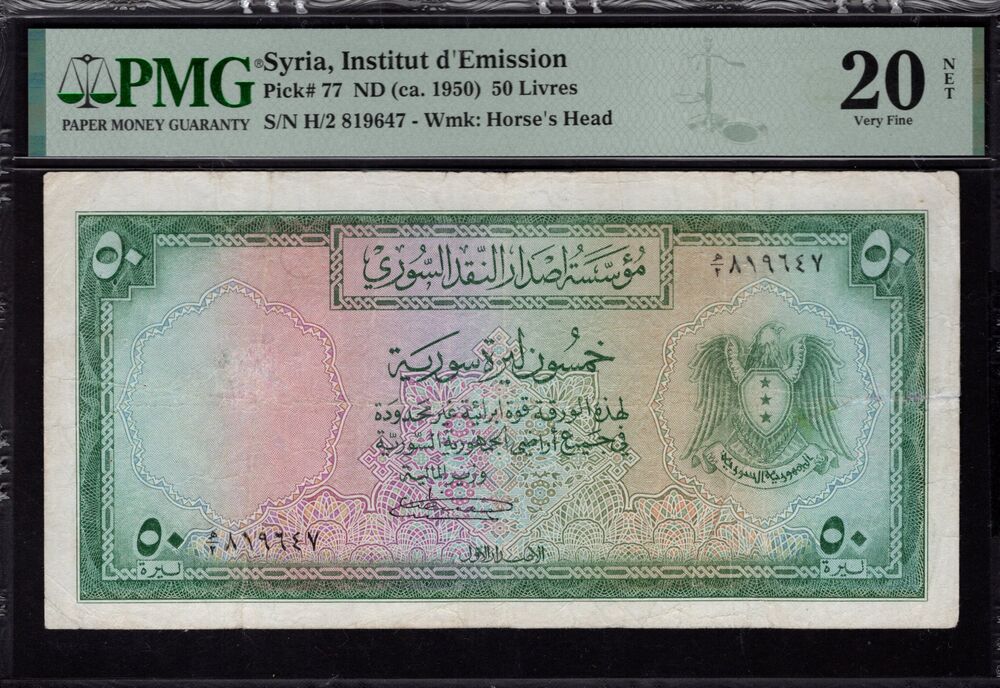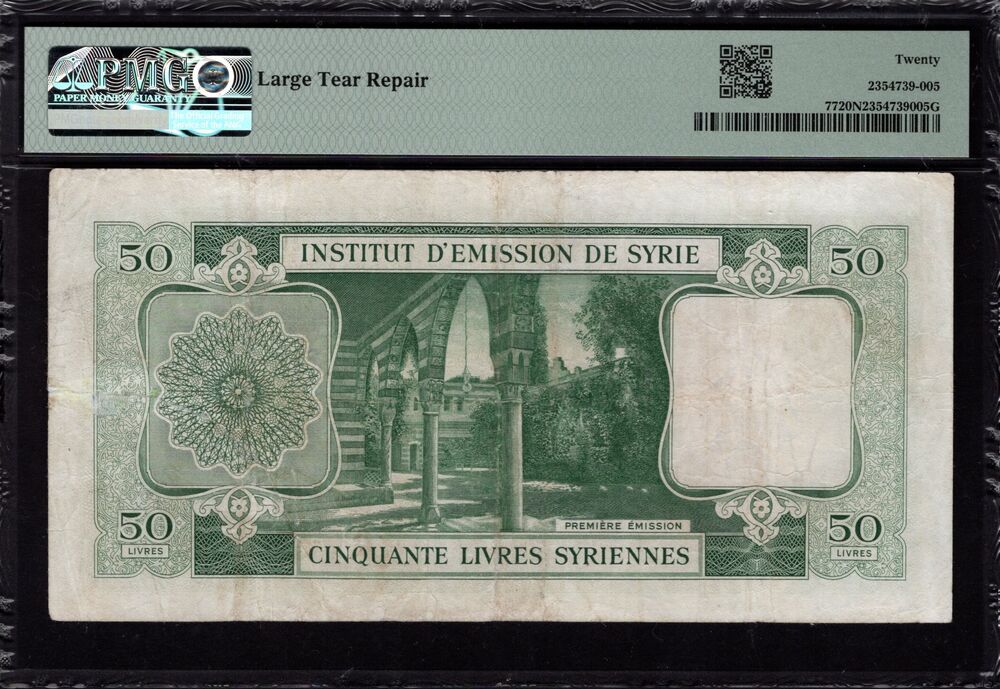This Syrian banknote, issued by the Institut d'Émission, features intricate designs and security elements associated with currency from the mid-20th century. It is printed in a green hue, highlighting its denomination of 50 livres. The obverse showcases ornate decorations, including Arabic text, a stylized emblem, and floral patterns, emphasizing the cultural significance of currency design. The reverse, though not visible here, typically maintains thematic coherence with similar intricate designs. Such notes not only represent monetary value but also embody the artistic heritage of Syria.
Obverse (front)
The front of the banknote displays a blend of intricate patterns and textures, primarily in shades of green and lilac. Prominent Arabic text identifies the institution and the currency's value of fifty livres. A detailed emblem featuring a double-headed eagle, combined with stars, serves as a central motif, symbolizing national identity. Surrounding ornamental borders add to the aesthetic, which is characteristic of mid-20th-century Arabic currency. The use of microtext and a potential watermark enhance the note's security features, safeguarding against counterfeiting.
Reverse (back)
Though the back is not visible, Syrian banknotes from this period typically feature complementary designs that echo the front's aesthetics. These may include additional Arabic inscriptions and detailed imagery reflecting cultural or historical significance. Security features like microprinting and concealed elements are often present. The detailed ornamentation and color gradients maintain a cohesive visual theme, reinforcing the banknote's value and securing its legitimacy.




